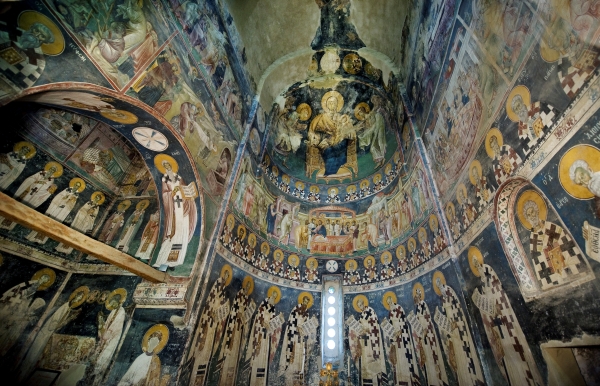The Means of Reconciliation
Integrated Heritage Protection in the Balkan Region
Text: Barbara Fogarasi

St. George, Sztaro Nagoricsane, Macedonia
The nationalist ideology of the Yugoslavian war did not only require human lives but also the destruction of buildings home to ethnic groups or religions. By restoring the mosques, churches and libraries also the identity of the groups of people belonging to these structures is reconstructed. The re-animation of the buildings – although the eternal losses are irrecoverable – triggers an internal procedure: the restoration of self-appreciation. This is how the built heritage may turn into the means of reconciliation. The European Council is presently taking part in two projects in the Balkan region. One of them, the South European Cultural and Natural Heritage Regional Programme comprises three sub-projects, that have partly been finished already. Based on the primary values of the European Council, this project is targeted at the challenges of the development of the region after the local conflicts. Its basic idea is that the man-made heritage is a device for reconciliation, co-operation and sustainable development. The other European Council project titled Local Development Experimental Programme is an interesting mixture of strategies targeted to harmonize cultural multitude, economic efficiency, social cohesion and ecological balance. There are two other ongoing projects also in the South Caucasian region.




